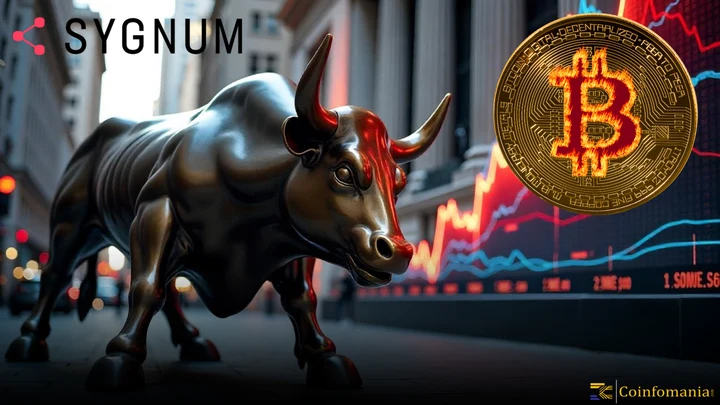Bitcoin’s Constrained Supply and Increasing Demand Underscore Bullish Outlook in Sygnum Bank’s June Investment Report
0
0

Sygnum Bank released its June Investment Outlook report via a June 4 post on X. This document provides readers with insights into evolving global financial conditions. It highlights factors shaping economic trends and their impact on digital assets. Key topics include tariff uncertainty, fiscal stress, and repercussions on Treasury markets. These conditions have led to a weaker dollar and altered liquidity patterns. The document then explains why risk assets, including cryptocurrencies, could benefit.
Bitcoin Supply Drops 30% on Major Exchanges Amid Increased Demand
The report identifies a notable decline in Bitcoin Supply on major trading exchanges. Over the past 18 months, exchange balances fell by roughly one million coins. This represents an approximate 30% reduction in liquid Bitcoin available to traders. Analysts attribute this trend to growing demand from institutions and ETF products. As more investors prefer holding rather than selling, market liquidity becomes tighter. Tighter liquidity could increase price swings for digital assets in the near term. Market participants should monitor these supply changes when making trading decisions.
Global Lawmakers Signal Support for Bitcoin Holdings
The Bitcoin supply shift occurred alongside growing Bitcoin institutional adoption across multiple regions. Several asset managers and financial products now integrate Bitcoin into their offerings. Legislators in three U.S. states have authorized holding Bitcoin reserves legally. New Hampshire has already enacted such legislation into law recently. Elsewhere, lawmakers in the U.K. and Pakistan have expressed interest in purchases. Bitcoin institutional adoption could have also been affected by reduced volatility and clearer regulatory signals. This underscores a key shift for institutional actors toward digital asset acceptance.
Graph 1, Bitcoin volatility, provided by Sygnum Bank, June 4, 2025
As Graph 1 indicates, Bitcoin’s price swings have lessened as markets mature and liquidity has improved over time. Historical volatility ranged between 60–100% but recently moved to 40–50% levels. Despite decreased volatility, Bitcoin remains more volatile than gold as a benchmark. Notably, upside swings have exceeded downside shocks since mid-2022, easing investor concern. Downside volatility poses greater risk for long-term holders seeking a store of value. Reduced downside swings could encourage more significant institutional involvement over time. These patterns influence decisions for portfolios, including cryptocurrency allocations.
Bitcoin and Ethereum Lead May Crypto Gains Amid Economic Uncertainty
May saw strong gains for major cryptocurrencies, especially Bitcoin and Ethereum. Bitcoin soared 11.1% amid fiscal instability and renewed risk-on sentiment trends. Ethereum posted a 41.0% rise following its successful Pectra network upgrade implementation. Higher network fees and revenue growth bolstered Ethereum’s appeal among institutional developers. Other cryptocurrencies exhibited varying performance; for example, Solana gained only 6.1%. Overall sentiment improved with investors viewing crypto as a hedge against instability. These dynamics highlight how macro trends can drive digital asset returns quickly.
Ethereum’s recent upgrade is prompting a reevaluation of its role as a base layer. Traditional financial firms now examine Ethereum for tokenized financial product development. Improved network security and stability have boosted institutional confidence in Ethereum. By comparison, alternative platforms faced setbacks from technical issues and outages recently. This shift might influence long-term planning for institutional digital asset infrastructure. Market watchers anticipate further changes as Ethereum evolves and regulatory clarity emerges. Investors should track these developments for potential long-term opportunities.
Stablecoin Growth Signals Capital Inflows into Crypto Markets
The report highlights stablecoin growth as an indicator of capital inflows into the crypto market. TRON maintains a high share of stablecoin transactions, especially in emerging markets. In developed regions, yield-bearing stablecoins such as PayPal’s 3.7% offering draw interest. Traditional finance firms like Galaxy and Robinhood prepare tokenized equity products for clients. Regulators are working on real-world asset rules, including SEC efforts for RWA frameworks. Recent comments suggest most crypto assets may not qualify as securities under U.S. law. Pending legislation on market structure and stablecoin issuance could reshape the regulatory landscape.
The post Bitcoin’s Constrained Supply and Increasing Demand Underscore Bullish Outlook in Sygnum Bank’s June Investment Report appeared first on Coinfomania.
0
0
 Manage all your crypto, NFT and DeFi from one place
Manage all your crypto, NFT and DeFi from one placeSecurely connect the portfolio you’re using to start.





